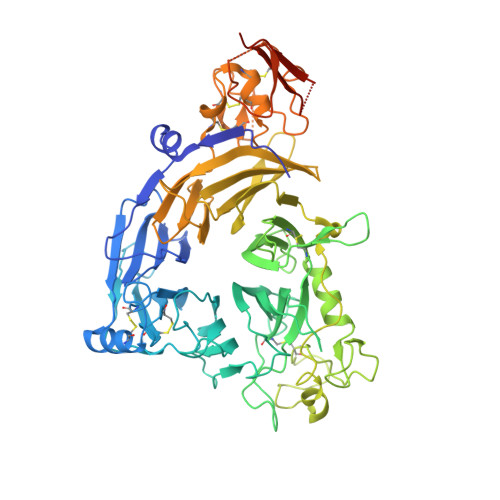Neuropilins lock secreted semaphorins onto plexins in a ternary signaling complex.
Janssen, B.J.C., Malinauskas, T., Weir, G.A., Cader, M.Z., Siebold, C., Jones, E.Y.(2012) Nat Struct Mol Biol 19: 1293-1299
- PubMed: 23104057
- DOI: https://doi.org/10.1038/nsmb.2416
- Primary Citation of Related Structures:
4GZ8, 4GZ9, 4GZA - PubMed Abstract:
Co-receptors add complexity to cell-cell signaling systems. The secreted semaphorin 3s (Sema3s) require a co-receptor, neuropilin (Nrp), to signal through plexin As (PlxnAs) in functions ranging from axon guidance to bone homeostasis, but the role of the co-receptor is obscure. Here we present the low-resolution crystal structure of a mouse semaphorin-plexin-Nrp complex alongside unliganded component structures. Dimeric semaphorin, two copies of plexin and two copies of Nrp are arranged as a dimer of heterotrimers. In each heterotrimer subcomplex, semaphorin contacts plexin, similar to in co-receptor-independent signaling complexes. The Nrp1s cross brace the assembly, bridging between sema domains of the Sema3A and PlxnA2 subunits from the two heterotrimers. Biophysical and cellular analyses confirm that this Nrp binding mode stabilizes a canonical, but weakened, Sema3-PlxnA interaction, adding co-receptor control over the mechanism by which receptor dimerization and/or oligomerization triggers signaling.
- Division of Structural Biology, Wellcome Trust Centre for Human Genetics, University of Oxford, Oxford, UK.
Organizational Affiliation:






















